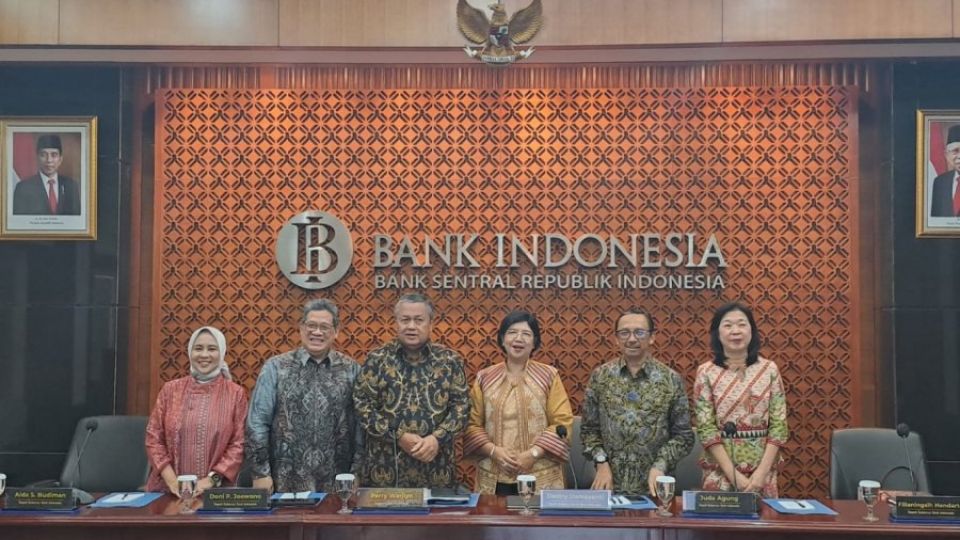December 22, 2023
JAKARTA – Bank Indonesia (BI) expects to keep its benchmark interest rate unchanged until the second half of next year to ensure inflation remains under control and the rupiah holds its exchange value.
In a press briefing following the central bank’s two-day monthly monetary policy meeting, BI Governor Perry Warjiyo announced that the BI rate would be kept at 6 percent for now, and probably throughout the first half of next year.
“If the rupiah stabilizes faster and inflation remains low, then the door to [a sooner cut] is open,” Perry told reporters on Thursday.
He said the rupiah had been strengthening, which could mitigate the risk of imported inflation.
Consumer price index (CPI) growth was expected to remain in the target range of 2.5 plus/minus 1 percent in 2024, based on current projections.
“Uncertainties in the global financial markets have started calming down. Not [gone altogether] but it will not get worse,” stated the governor.
The central bank believes that the federal funds rate (FFR) in the United States has reached a peak at its current level of 5.25 to 5.5 percent and that the US Federal Reserve (Fed) will keep it there throughout the first half of 2024.
Perry said that BI, based on its fundamental analysis of the US economy, expected the Fed to cut its rate by a total of 50 basis points (bps) next year, less than a widespread market belief of 75 bps coming off the FFR in 2024, following dovish signals from last week.
This analysis takes into account US GDP growth, which BI expects to strengthen in 2024, as well as inflation, which has cooled down but remains above the target.
“We will, of course, monitor developments”, said Perry, before explaining that an FFR cut would be taken into consideration for BI’s rate decision but that BI would not blindly “follow” Fed policy, given that Indonesia’s inflation and rupiah stabilization remained the priorities.
Bank Danamon economist Irman Faiz wrote in a statement on Thursday that the FFR might have reached its “terminal rate”, and “thus, BI has also reached its terminal rate amid stable inflation”.
Despite Perry’s statement on the BI rate being decided independent of the FFR, Irman said BI would keep its benchmark rates unchanged until the Fed “undergoes a shift in policy stance”, which he predicted to happen in next year’s second half at the earliest.
“However, BI’s room for rate cuts next year may not be as extensive as the Fed’s, given the projected widening trend of the current account deficit,” said Irman.
Data released by BI in November show an Indonesian current account deficit of US$107 million as of the third quarter due to a narrowing trade surplus, partly because commodity prices subsided around the start of 2023.
Prices of key Indonesian export commodities boomed in 2022, resulting in a current account surplus of $12 billion, but commodity prices have been projected to ease further in 2024, adding strain to the current account.
“BI will gradually normalize the spread between the FFR and the BI rate, starting from 2024 onward,” said Irman.
Read also: Inflation moves closer to 3 percent amid costly food prices
Likewise, Bank Permata chief economist Josua Pardede highlighted that the current account deficit was “prone to widening” amid a global economic slowdown, which would adversely affect Indonesia’s export performance.
“The risk is expected to ease during the second half of 2024, especially after the Fed starts cutting policy rates,” read Josua’s statement released on Thursday.
Josua pointed out in the statement that one risk factor for domestic inflation in the first half of next year was the El Niño weather phenomenon that would disrupt food production and propel prices.
Taking that into consideration, Josua projected that BI would hold the rate steady at 6 percent for at least six more months, before cutting it by 50 bps in the second half of 2024.
Indonesia’s annual CPI growth rose to 2.86 percent in November due to food prices climbing, according to Statistics Indonesia (BPS). That rate is safely within BI’s inflation target, which is 3 plus/minus 1 percent for this year


